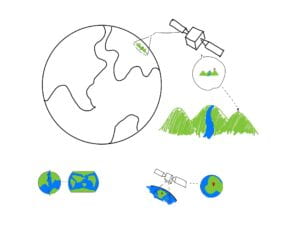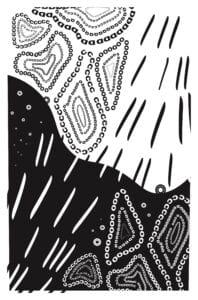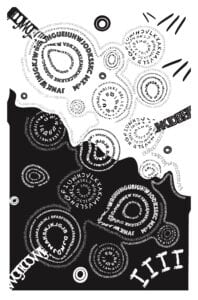Members: Siwei Chen, Jim Liu

This is an illustration of the GPS System on earth that serves to introduce the technology to aliens. GPS system, as we all know, is a satellite-based navigation system that allows users to determine their precise location, speed, and time, anywhere on or near the Earth’s surface.
To better understand the illustration, the characteristics of our subject, known as “heptapods” in the story, must be understood. They are described as having a very different physiology and perception of time than humans. They do their communications using a complex system of visual symbols, which they call “semagrams”. These symbols are circular, with multiple rings that represent different layers of meaning. The heptapods can manipulate these symbols in various ways to convey different messages. Furthermore, they have a non-linear perception of time, which means that they experience time all at once rather than in a linear sequence as humans. They are able to perceive past, present, and future events simultaneously.
Honestly speaking, it is quite hard to imagine how they perceive the world without the causal mindset, which we, as human beings, have been mastering in using it for millions of years and regard as something indispensable to our way of thinking, just as air and water to our living. So it’s quite difficult to imagine how the alien will understand the illustration. Thus, we tried to make the illustration as clear-cut to be understood by aliens as possible.
In the middle of the picture to the up-right is the earth. The drawing we think is pretty representative because the first thing of our civilization that aliens driving their spaceship perceive must be the earth, and the drawing vividly depicts it. And on the right surface of it, there is an object on the mountain. Then, an artificial satellite scans the surface of the earth and creates a piece of positional information, which is externalized using graphs. The information could be internalized and used by human beings on earth. We use a circular mode to represent all of this, instead of using a linear one. This is because according to “Story of Your Life”, it matches aliens’ mindset of thinking, which is kind of circular.
On the left corner of the picture, there is an illustration of the earth whose equator is highlighted, signalizing aliens to orbit around the earth. Next to it is a map of the earth. The former two things signalize what a map is, which can further illuminate how to understand the maps created by the GPS system. This illustration of how to understand a map is crucial to aliens’ understanding of the information given by the GPS system because human beings have been so familiar with the language of maps but aliens possibly aren’t.
On the right corner of the picture, it shows how the satellite scans the area to make map information, which further illuminates the idea.
The three parts of the picture, as a human being would understand, should have a logical order to express the whole idea. If the picture were written for human beings, we would add some logical symbols such as arrows to represent it. However, they would be useless and even distracting to aliens in the fiction, who see the picture as a whole.
However, we still think that there’s room for improvement. For example, we still divided the illustration into three parts, which is also something human beings have accustomed to doing when illustrating something. It would be more understandable to aliens if we come up with another great idea without using parts and logic.

